- Need Any Help: +1 647-760-5505 or
- info@trubicars.ca
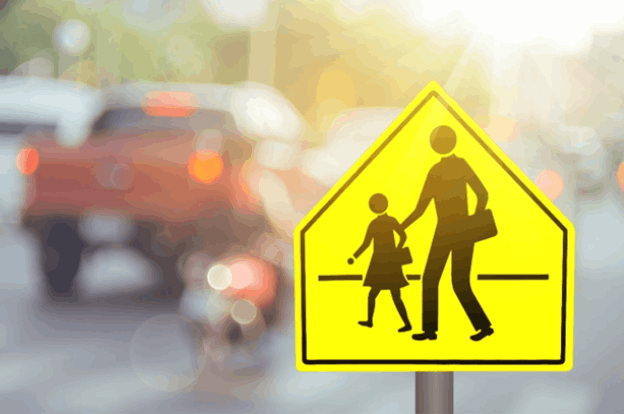
School zones are an integral part of ensuring the safety of children as they travel to and from school. In Saskatchewan, just like in many other provinces and states, strict regulations are in place to protect young pedestrians and promote responsible driving in these designated areas. In this blog, we will delve into the importance of understanding school zone regulations in Saskatchewan and provide valuable insights on how to keep children safe. Additionally, for those looking to enhance their driving skills in Saskatchewan, we recommend booking through Trubicars, a trusted platform for finding the right driving school.
School zones are designated areas near schools that have reduced speed limits during specific hours of the day. These zones are crucial for the safety of children, as they provide a controlled environment for them to cross streets and navigate sidewalks. Reduced speed limits and other regulations help prevent accidents and ensure the well-being of young pedestrians.
The new school zone signs have a pentagon shape, with a fluorescent yellow-green background and show a black silhouette of a schoolboy and a schoolgirl.
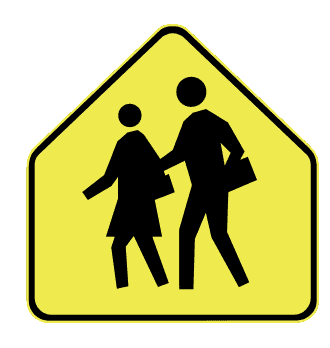
It is vital for drivers to be aware of the reduced speed limits and adjust their driving accordingly. When this sign has a “Maximum Speed” or “km/h During School Days” tab mounted underneath, it means the speed is to be observed as indicated.
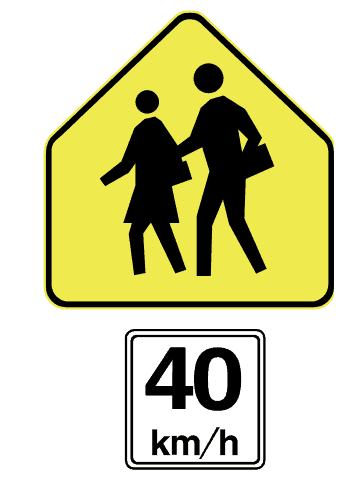
Driving above the posted speed limit in a school zone is a serious offense in Saskatchewan. Penalties for speeding in school zones can include fines, demerit points on your driver’s license, and potential increases in your insurance premiums. More importantly, speeding in these areas can put the lives of children at risk.
In addition to speed limits, it’s essential to be aware of the rules regarding school buses in Saskatchewan.
The role of a school bus driver is undoubtedly challenging, with numerous distractions present inside the bus. Recognizing these challenges, it’s crucial for other drivers to exercise extra caution and be mindful of the fact that the bus driver might not have full visibility of them or their signals. Among the various types of accidents involving school buses, rear-end collisions stand out as the most common. These accidents typically occur when another driver fails to stop while the school bus is in the process of loading or unloading passengers.
When approaching a school bus, if you see amber flashing lights, slow down and proceed with caution. If the red flashing lights are activated, you must come to a complete stop. If you’re approaching the bus from the opposite direction on an undivided highway, you must also stop. The single greatest threat to the safety of children who ride school buses is motorists who pass the bus when children are loading or unloading.
When approaching a bus that has its stop arm out and its red flashing lights activated, as a driver:
You must stop no closer than 5 m (15 ft.) from the front or back of the bus.
You must not advance your vehicle until the bus driver turns off the flashing red stop lamps and deactivates the stop arm.
Before moving, check to see that all children have safely crossed the roadway.
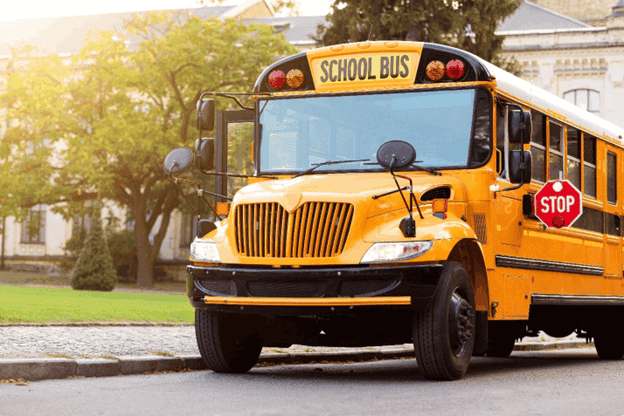
Passing a school bus with its red flashing lights activated is a significant violation, carrying a minimum fine of $360. It’s important to note that on a divided highway, drivers traveling in the opposite direction do not need to come to a stop for a school bus. However, it’s essential to be aware of local regulations, as certain cities, towns, and villages may have bylaws that prohibit the use of flashing red stop lamps and stop arms on school buses. In such communities, passing the bus is allowed.
When encountering a school bus displaying four-way hazard lamps, drivers are not obligated to come to a full stop. However, it is imperative to exercise caution, reduce speed, and always be vigilant for children who may be crossing the road. The safety of children should remain a top priority in all situations involving school buses.
Crosswalks are another critical aspect of school zone safety. Drivers must yield the right-of-way to pedestrians in crosswalks, whether they are marked or unmarked. It’s crucial to approach crosswalks cautiously, especially in school zones, as children may be crossing the road at any given time.
For those who want to improve their driving skills in Saskatchewan, choosing the right driving school is crucial. Trubicars is a trusted platform that can help you find the perfect driving school in your area. Whether you are a new driver looking to obtain your driver’s license or seeking additional training to become a safer and more responsible driver, Trubicars can connect you with reputable driving schools in Saskatchewan.
Understanding school zone regulations in Saskatchewan is essential for keeping children safe as they travel to and from school. By adhering to reduced speed limits, respecting school bus rules, and yielding to pedestrians at crosswalks, we can contribute to creating a safer environment for our community’s youngest members. If you’re in Saskatchewan and looking to improve your driving skills, consider booking through Trubicars to find the right driving school that suits your needs. Together, we can prioritize the safety of our children and ensure that school zones remain secure places for learning and growth.

 February 13, 2024 by
February 13, 2024 by Reema Sharma
Reema Sharma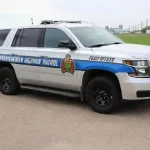
 January 17, 2024 by
January 17, 2024 by Trubicars
Trubicars
 January 17, 2024 by
January 17, 2024 by Trubicars
Trubicars
Once you acquire the knowledge provided in
those tests, you are ready to pass the
test,
the first time.
